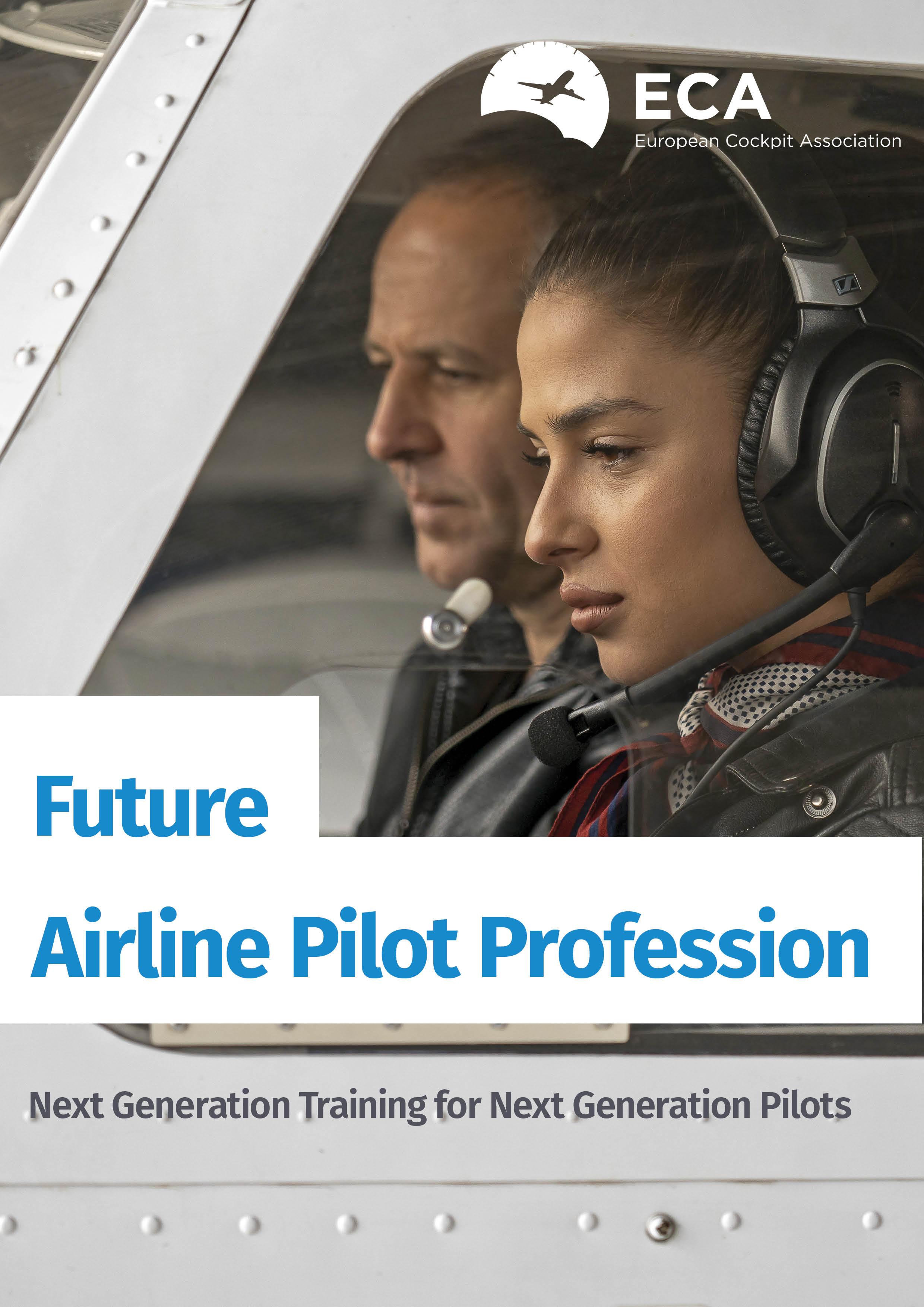

By the time you are reading this article, 80% of people would have failed to achieve their 2020 New Year’s Resolutions. Millions of people worldwide pledge at the beginning of each year to introduce sweeping changes, mostly aiming at a better & healthier lifestyle, only to drop their ambitious plan several weeks later.
Revamping pilot training has become a somewhat similar tradition as the New Year’s Resolutions. Year on year, the industry pledges to improve training in an effort to create ‘flight-deck ready’ pilots. This means not only pilot license holders who can fly but also manage operations in a complex and dynamic air transport system. But just like New Year’s resolutions, the industry largely fails to change its habits.
A new ECA publication draws attention to the need to adapt pilot training for the next generation of commercial line pilots. “The Future Airline Pilot Profession” looks at the pilot training syllabus, which largely remained the same for decades despite generations of new technologies and systems. The advanced knowledge and understanding of the importance of human factors and team dynamics only now find their way into the training programmes. And while virtual reality and artificial intelligence projects are slowly getting embraced by major training schools and manufacturers, they are yet to be rolled out on a wider scale.
What is holding back the introduction of these solutions in an industry as aviation, once the flagship of progress and innovation? Most likely – just like with New Year’s Resolutions – the internal battle between “knowing what you should do” and the “efforts you need to invest”.
It is no secret to anyone in the industry what we should do to improve the quality of pilot training. It starts with better screening of potential candidates, thorough selection and early airline involvement in this process. A combination of aptitude, knowledge and proper skills, and dedication to a flying career are a good starting point. These, however, have become a secondary hurdle to pilot training. The first hoop to jump through is financing pilot training. As the majority of airlines stopped training their own pilots, cadets started paying for training out of pocket. Flight schools mutated to business units, churning out as many license holders as possible. Now that this ‘selection by wallet size’ starts showing its real face, some airlines are seeking ways to reclaim their involvement in the training process.
This is what United Airlines recently did. In February, the US airline announced to have bought a pilot academy. But many major European airlines are still reluctant to get their hands ‘dirty’ with training their future pilots. Instead, they opt for partnering up with flight schools. This approach ensures a steady flow of pilots to fill their positions and a certain say over the training. But it does not ensure airline driven selection or input in the initial training. It gives few opportunities for mentoring the cadets and misses a golden chance to expose cadets to the airline’s operational reality early on in the training. All these elements have been identified as key to the future of pilot training. Airlines should simply be involved early on in the selection and training of their pilots.

Today’s aviation shows a significant gap between the requirements for a pilot license – to safely fly the aircraft – and the actual real requirements and demands of the profession – to safely and efficiently operate an aircraft in an airline environment. Initiatives and regulatory changes, like the APS MCC (Airline Pilot Standard Multi Crew Cooperation), intended to bridge that gap and supply ‘industry-ready’ pilots may be a first step, but they actually do not address the root cause of the problem: the lack of a proper initial pilot training, focused on the profession rather than the license.
Beyond selection, the training curricula have very often missed an opportunity to make the best of glider flying or aerobatic maneuvering. Industry experts have made a convincing case about the benefits: they can be very helpful in visualizing aircraft upset situation and recovery techniques and generally provide an efficient way to train urgently needed manual flying skills. There are some good examples too, e.g. a major European carrier includes a 4-week glider training as part of the cadet program. Experience in smaller aircraft also underpins other theoretical subjects like meteorology, aircraft design aerodynamics, basic instruments.
Another ‘should’ is the training of a wider skills set of pilots today. Pilots are expected to master leadership, decision-making and be resilient. But all those skills are not entirely something they are all just born with. They can and should be trained. Today, licensed pilot graduates are hit with a sobering reality once they start their career in the cockpit – high pressure, irregular shifts, delays, ever-complex systems and operations to be managed under intensive – quite often commercial – pressure. Many are simply unprepared for this reality. Pilot training gives them a license and the technical knowledge to fly an aircraft but not all skills needed for the day-to-day operations and a life-long career.
The industry knows what pilot training should be. But for some reason it fails to translate it into specific changes. Yet, with air travel demand growing, now is not the time to give up on our good resolutions.